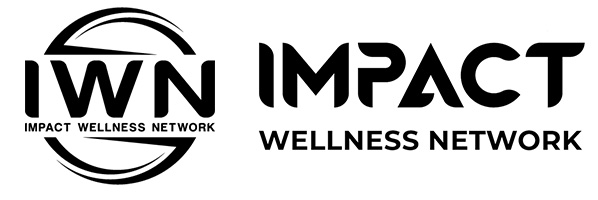When it comes to creating laws and ensuring public health and safety, the United States has a strict system to determine how controlled substances are classified. At the heart of this process is the Drug Scheduling System, a framework used to sort drugs into categories, or “schedules.”
But what exactly does this system entail, and how does it work? If you’ve been curious about how certain drugs are classified – and the reasoning behind the distinctions – you’re in the right place.
This guide offers a comprehensive yet easy-to-understand explanation of the Drug Scheduling System.
What Is the Drug Scheduling System?
The Drug Scheduling System is a classification structure established by the Controlled Substances Act (CSA) of 1970. Overseen by the Drug Enforcement Administration (DEA) and the Food and Drug Administration (FDA) in the U.S., it is used to regulate substances that have a potential for abuse, dependency, or medicinal use.
Drugs and substances are categorized into five schedules based on several factors, including their medical use, addiction potential, and the potential risks or benefits. Each schedule comes with specific restrictions that law enforcement and healthcare professionals observe closely.
Why Was the Scheduling System Created?
The system was designed to maintain a balance between supporting medical advancements and protecting public health. It primarily addresses two key issues:
- Public Health and Safety: Ensuring drugs with high abuse potential are tightly regulated.
- Medical Research and Treatment: Allowing legitimate access to drugs that have documented health benefits.
Now that you know why the system was created, let’s break it down schedule by schedule.
Understanding Drug Schedules (I–V)
Schedule I
- Definition: These substances are believed to have no currently accepted medical use in the U.S. and have a high potential for abuse.
- Examples: Heroin, LSD, Ecstasy (MDMA), and Cannabis* (though some states have legalized medical and recreational use under specific laws).
- Restrictions: Schedule I drugs are the most tightly regulated and cannot be legally prescribed or used outside of approved research studies.
Schedule II
- Definition: Substances classified under Schedule II have a high potential for abuse, which may lead to severe psychological or physical dependence, but they have accepted medical uses under strict regulations.
- Examples: Cocaine (used medically as a local anesthetic), Methamphetamine, Fentanyl, Adderall, and Oxycodone.
- Restrictions: These substances can only be prescribed under stringent rules and must often involve special documentation or medical necessity.
Schedule III
- Definition: Drugs with lower abuse potential than Schedules I and II but still carrying risks of dependence. They have accepted medical uses.
- Examples: Anabolic steroids, Ketamine, and some forms of codeine mixed with non-narcotic ingredients.
- Restrictions: Less tightly regulated than Schedule II substances, these drugs may be prescribed more freely but are still monitored.
Schedule IV
- Definition: Substances in this category have a relatively low potential for abuse and dependence compared to Schedule III drugs, with generally accepted medical uses.
- Examples: Xanax, Valium, Ativan, and Ambien.
- Restrictions: Prescriptions are easier to obtain, though some states may have additional regulations around refills or amounts prescribed.
Schedule V
- Definition: Schedule V drugs have the lowest potential for abuse and contain limited quantities of certain narcotics. These are often used for basic medical purposes like managing coughs or diarrhea.
- Examples: Cough syrups with small amounts of codeine (like Robitussin AC) and medications with Loperamide.
- Restrictions: These substances are the least regulated and, in some cases, can even be purchased without a prescription under specific circumstances.
How Are Drugs Classified?
The DEA and FDA follow a rigorous process to determine how a substance is scheduled or if it needs to be reclassified. They consider criteria like:
- Evidence of a drug’s medical value and effectiveness.
- Potential for abuse or misuse.
- Risks of addiction or dependency, both physical and psychological.
- Patterns of abuse nationally and globally.
- Scientific knowledge or studies are available on the substance.
Collaboration among scientists, medical professionals, public health experts, and law enforcement ensures that decisions are thorough and data-driven.
Controversies Surrounding the Drug Scheduling System
While the system is critical for public health, it’s not without its challenges. Some concerns and debates include:
- Cannabis Debate: Marijuana is still a Schedule I drug at the federal level, even though many states have legalized its use. This creates confusion for both medical professionals and users.
- Over-Regulation vs. Medical Accessibility: Critics believe that substances with notable medical benefits, such as psilocybin or MDMA for mental health treatment, should not be Schedule I drugs.
- Outdated Classifications: With new research constantly emerging, some argue the system needs periodic updates to keep pace with science.
Why It Matters
Understanding the Drug Scheduling System isn’t just about knowing which drugs are legal or illegal. It’s about understanding why some substances are tightly regulated and how these classifications impact medicine, research, and even law enforcement.
Whether you’re navigating healthcare decisions, policymaking, or just expanding your knowledge, knowing how the system works helps you engage with confidence.
Reach Out to Impact Wellness Network
If you have concerns about drug abuse, addiction, or mental health support, Impact Wellness Network is here to help. Our team of experts provides compassionate care and evidence-based treatment for individuals struggling with substance use disorders. Contact us today to learn more about our services and how we can support your wellness journey.

